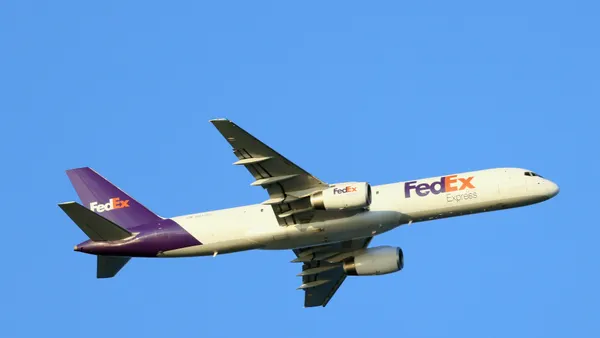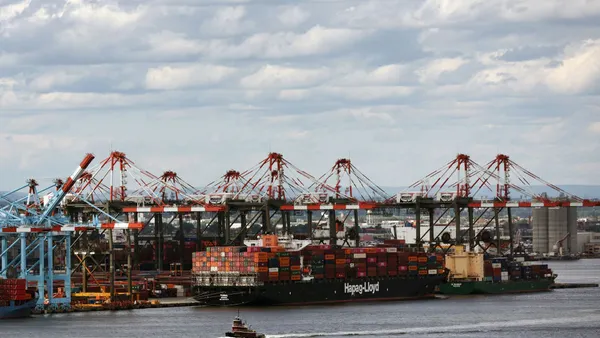Dive Brief:
- Airfreight volume fell more than 20% year over year (YoY) in May, according to the latest numbers from the International Air Transport Association (IATA). Freight capacity fell nearly 35% YoY in May and international belly capacity fell by about 66% YoY as a result of passenger flight cancellations due to the pandemic, according to IATA.
- "The gap between demand and capacity shows the challenge in finding the space on the aircraft still flying to get goods to market," IATA CEO Alexandre de Juniac said in a statement. "The prospects for air cargo remain stronger than for the passenger business, but the future is very uncertain."
- IATA called the May numbers an "initial recovery" as supply and demand for airfreight showed growth compared to April. A stabilizing manufacturing industry and new export orders helped power the month-over-month growth, the association said.
Dive Insight:
Shippers transporting their cargo via air face the double whammy of high airfreight rates and limited capacity, although metrics showed slight improvement in May.
Airfreight rates reached their peak in May and have been steadily falling ever since. But the current price of $4.86 per kilogram to move cargo from China/Hong Kong to the U.S. is still about 76% higher than pre-pandemic rates, according to the TAC Index.
FedEx said on its earnings call last week that it used surcharges "to balance demand against air cargo capacity."
"Total intercontinental volumes exited May with a year-over-year growth," FedEx Chief Marketing and Communications Officer Brie Carere said on the earnings call. "As we plan for FY 2021, we anticipate air cargo capacity recovery will take at least 18 months to return to pre-COVID levels."
Carere also said the carrier will renegotiate its Express contracts to reflect the current air cargo environment.
"Our capability on intercontinental lanes is highly sought after, and demand is growing as country restrictions are lifted and manufacturing begins to ramp up again," Carere said. "We have added extra capacity in the short term to support this demand and help our customers as they restart their business activities."
Freighter capacity — like that provided by FedEx, Atlas and other carriers — currently makes up 75% of total air capacity in the transatlantic lane, FedEx Chief Operating Officer Raj Subramaniam said on the call, adding that "increasing international profitability is a major priority for us."
FedEx also stood up an Air Capacity Coordination Center that allowed it to move capacity to areas where it could "maximize our revenue and profitability," Subramaniam said.
But as executives turn to their tea leaves to understand when and how an economic recovery might unfold, the air cargo industry is left with as much uncertainty as everyone else.
"Economic activity is picking up from April lows as some economies unlock," de Juniac said. "But predicting the length and depth of the recession remains difficult."















